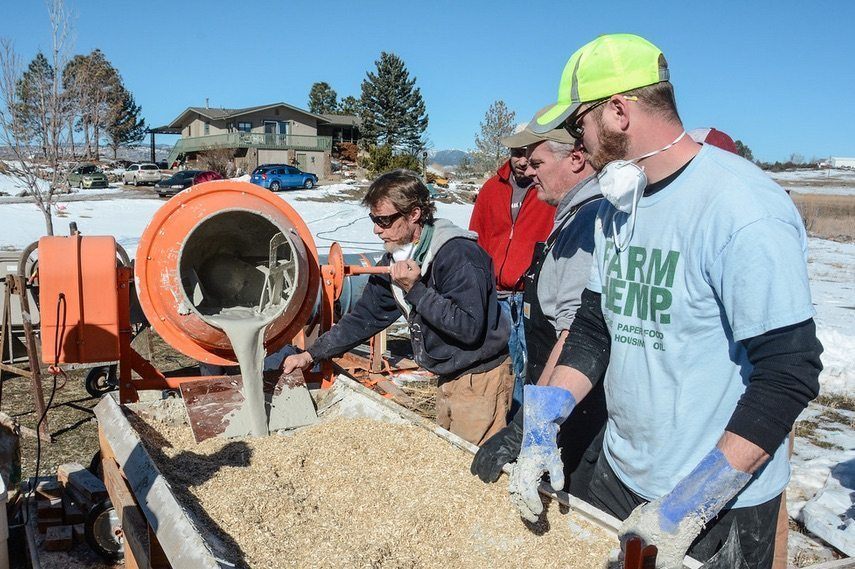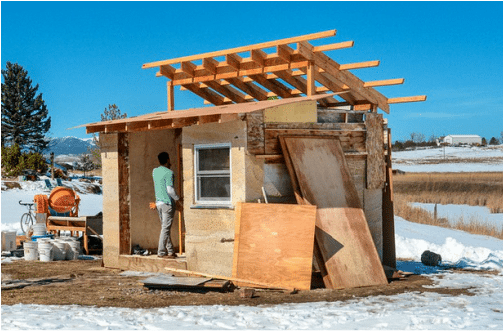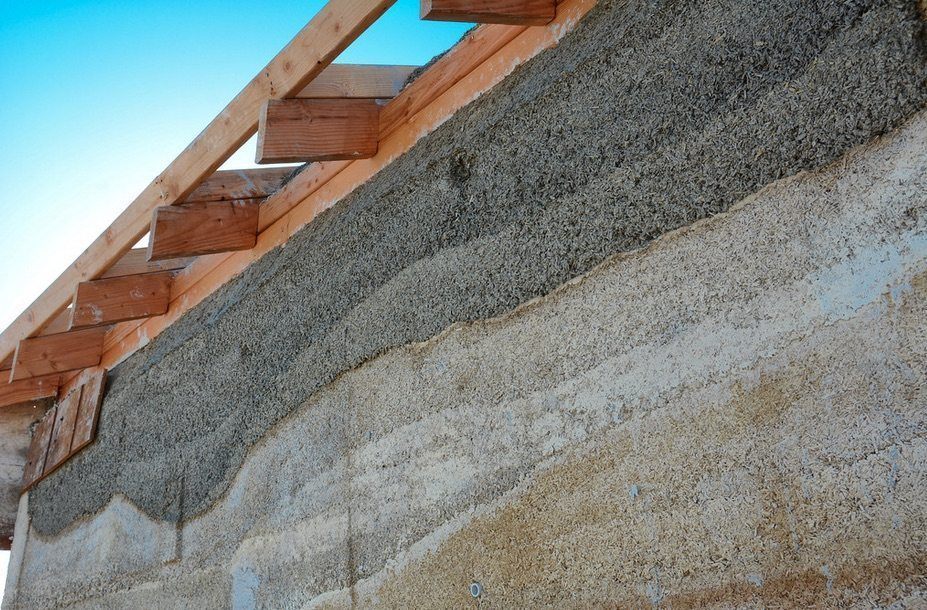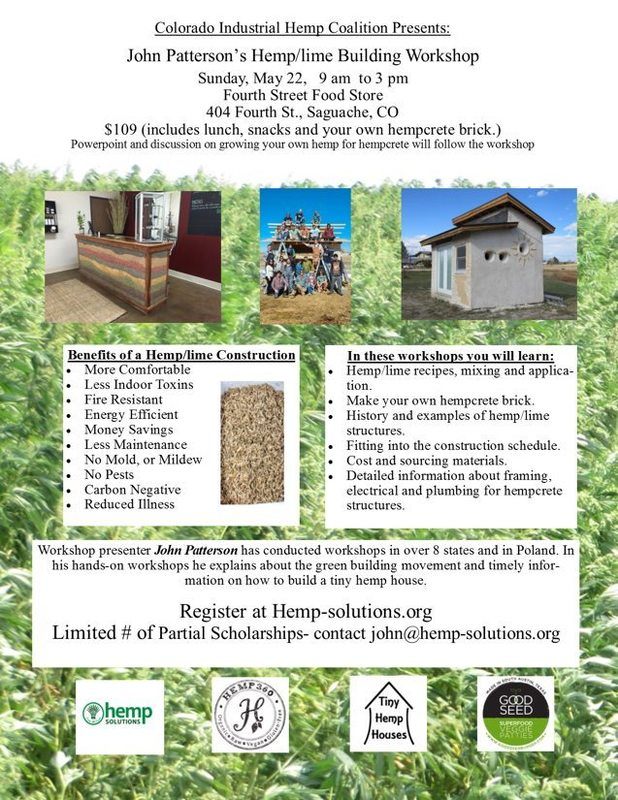[ad_1]
Ministry of Hemp sits down with John Patterson, educational director at Hemp Solutions and founder of Tiny Hemp Houses to learn about building green through hemp

Tiny Hemp Houses is changing the game in how we build houses.
Rather than using the dry walls, synthetic paint, and other hazardous materials, John Patterson uses a mixture of hemp, called hempcrete, which is completely natural and sustainable. To help raise awareness of what hemp can do for us in construction and industrial applications, Tiny Hemp Houses offers hemp building classes and education opportunities on hempcrete to the general public.
This week, we got the opportunity to chat with John to learn about his passion for hemp and to get an overview on hempcrete and its benefits.
Hi John, thanks for taking the time. To kick it off, could you share your background and your role in the hemp community today?
John Patterson: I’ve been a carpenter most of my life and have always looked for better ways to build houses. I especially was always looking to try to build more eco-friendly and “green” – but I had a hard time finding a commodity that was actually green and compatible for construction.
That was almost 4–5 years ago. I then started doing online research and looked at various ingredients like straws. That’s when I came across a hemp building class and jumped at the opportunity. I haven’t turned back since. After learning how it works, I started running hemp workshops, helped people build hemp houses, and also educated them on hempcrete.

Six months ago, I even joined up with Hemp Solutions as an Education Director.
How did you first get introduced to hemp and what inspired your passion for it?
JP: My earliest memory of hemp was back when I was 8 years old. My uncle had a 5 acre farm, where there was a small batch of hemp field. I can recall this because there’s a picture of me near that field. I loved going out there as it was a taste of farm life for us.
But one day, we got to my uncle’s farm and there were like 9 cop cars. They were burning the hemp field. They claimed that it was marijuana, but I knew even at that young age that it wasn’t a drug that was growing on the farm.
This left a lasting impression on me and I think that’s why I got so interested when I learned about that hemp building class. Before then, I never knew that you could use hemp for construction or anything like that.
“We really need to stop digging for resources and start growing them above ground.”
My passion for hemp continues to grow because of its potential. The building material industry is huge and applications of hemp are growing. For example, at Hemp Solutions, we are developing a water filtration system with hemp.
There are so many things that the world needs and we really need to stop digging for resources and start growing them above ground.
Hempcrete is still a foreign concept for the general public – could you provide us an overview of what it is and how it works?
“Hempcrete can be a sustainable replacement for dry walls, insulation, exterior boardings, house wraps, and paint.”
JP: Hempcrete, unlike what its name implies, is actually not a replacement for concrete.
Hempcrete is the mix of the inner part of the hemp plant – called “hurd” – and a lime based binder. It is used for thermal wall system and can be a sustainable replacement for dry walls, insulation, exterior boardings, house wraps, and paint.

So how it actually works is when you’re building a house, you still have to use concrete to lay the foundation and build up the framework. But then, with hemp lime binding, you wrap the frame with our mix and it creates a wall that replaces all the other components that I mentioned before.
What’s great about hempcrete is that you can use it for your floor, wall, and even your ceiling. It works great as a thermal insulator and allows you to live in a healthy environment.
Do you think that the US is behind other industrialized countries in hemp research and development? How do you see that affecting us?
JP: Most definitely – Europe has been using hemp and lime based binders for at least 20 years. It’s now a much more accepted material over there and they’ve done a lot of testing. They make hundreds of buildings a year whereas the United States has only built about ten structures total.
But I don’t think that should discourage us. We can catch up because there’s proof of concept and things we can borrow from Europe. I’ve been invited to teach hemp building classes in Poland and many cities in the United States. Hemp building experts from around the globe are willing to teach us what they’ve learned in the hemp industry. Europeans are realizing that hemp will soon take off in the US – and they know that when US gets interested in something, a lot of demand and innovation occurs.
Among different hemp applications, what makes most sense for the US to develop?
JP: Some hemp strains grow better in certain areas compared to others. If you’re harvesting for seed, Canada is a good climate for that. Southern climates are better for the stalks. Colorado seems to be doing well growing hemp for CBD applications.
The United States is a big place, so I think we can focus on different applications for different regions. It’ll also be up to where the demand comes from. The market will create the demand for the farmers. We have to form the market for more farmers to grow hemp and for more processors to be put in place to process the hemp.
Before we have a market, there’s no reason for the farmers to grow it.
“It’ll be up to the ingenuity of the people in the industry to utilize hemp- how can industrial hemp be good replacements for currently used components?”
Where I think the opportunities lay in the US is by growing good stalk strain and hurd. But it’ll be up to the ingenuity of the people in the industry to utilize these supplies – how can industrial hemp be good replacements for currently used components?
How has the hemp landscape in the US changed while you’ve been involved?
JP: When you look at the NoCo Hemp Expo, you can tell how much the landscape has changed in the three years its been around. Just by observing the venue and professionalism, you can tell how much the industry has grown.
It was much smaller in the first year – it was hosted at a large bar. Last year, we saw many new companies displaying about hemp. This year – year 3 – there were bigger companies, more investments, fancier brochures and better marketing. You can tell that more people are noticing hemp. Real businesspeople and farmers are taking hemp seriously.
More investors are interested in hemp, are more aware of it, and are making decisions to put money into hemp. In previous years, they might have been said “What a great idea, but can I make any money with it?”
Now, they are actually seeing the numbers coming out of Canada, Europe, and even Colorado.
How do you see the hemp industry continuing to change in the near future? What is your biggest concern?
JP: It does hamper the enthusiasm since hemp is not federally legalized. We need the national movement. If we drag our feet too long and over-regulate, people won’t be interested in hemp.
When the government states it as a drug, people will be turned off. Until the ban is lifted, we’ll only have small cottage farmers growing hemp. The big guys won’t get in it until they see more momentum. People don’t want to lose their farms and go to jail.
I agree that the timeline of deregulation is probably the biggest risk for hemp’s future in the US. But on the flip side, what excites you the most?
JP: I’m extremely excited that we’ve had the momentum that we’ve had. With all the attention we’re gaining, it’ll soon be like trying to stop a freight train . I’m excited to see the positive movement continuing to grow to help lift the federal ban.
I also am excited for the higher tech applications of hemp. I expect to see more usage in transportation, like bodies of cars. As I mentioned before, we are looking into a water filtration system – using hemp as a way to filter water using bio based technologies.
It’s exciting how many companies and industries are already interested in the use of hemp even before it’s legalized. The people are ready for it. People need to be pissed off that we’ve been lied to about one of the most useful plants in the world.
What type of impact do you want to make for hemp?
“We want to educate people towards a more bio-based economy and let people know what is really affecting their health – what they eat, where they live, and even their communities.”
JP: Our education mission is not only to un-do what was done to hemp, but to enlighten people to all of the great uses that we can develop to change the way we live. We have a lot of work to do still. When I travel to places outside of Colorado, a lot of places are unaware of hemp’s many uses and what it can do for their local economy.
My goal is to let people know they have options for their resources – industrial hemp is one of them. We want to educate people towards a more bio-based economy and let people know what is really affecting their health – what they eat, where they live (homes) and their communities.
JP: I would encourage everyone to learn more about how hemp building works and the impact that it could make in our community. I have a hemp building workshop coming up in May that I’d like to share with everyone. Check out the flyer and come learn more about hemp building!

[ad_2]
Source link